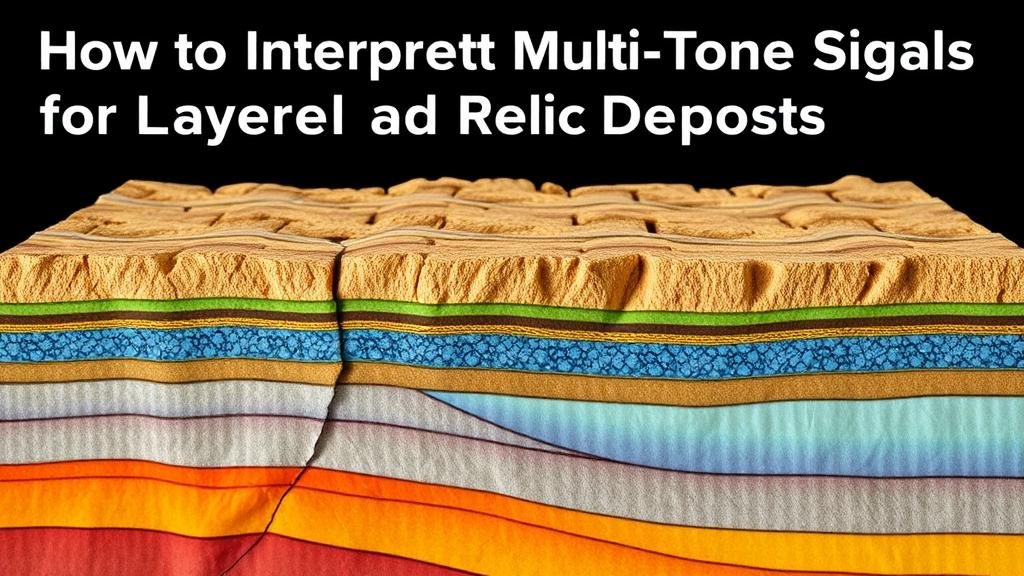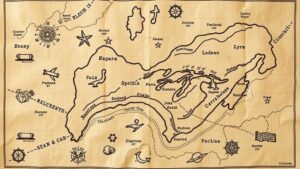How to Interpret Multi-Tone Signals for Layered Relic Deposits
Understanding Multi-Tone Signals in Geophysical Surveying
The interpretation of multi-tone signals in geophysical surveying is a critical skill for professionals in archaeology and geology, particularly when identifying layered relic deposits. Multi-tone signals arise from the interaction of electromagnetic waves with different materials found beneath the surface. This article delves into how these signals can be interpreted to uncover valuable archaeological and geological insights.
The Basics of Multi-Tone Signals
Multi-tone signals occur when a detector senses multiple frequencies or tones produced by varying subsurface materials. e signals can offer a wealth of information about the composition, depth, and structure of layered deposits. For example, metals, soil types, and even moisture levels can produce distinct tones when scanned with geophysical instruments such as metal detectors or ground-penetrating radar (GPR).
Characteristics of Multi-Tone Signals
To properly interpret multi-tone signals, it is crucial to understand their characteristics:
- Frequency Response: Different materials respond at varying frequencies. For example, dense metals like gold generate high-frequency signals, while larger, less dense objects produce lower frequencies.
- Phase Shift: Changes in phase can indicate the depth and size of the object. A significant phase shift at a given frequency may suggest the presence of a larger relic deposit.
- Signal Strength: The amplitude of the signal corresponds to the objects size and its conductivity. Strong signals generally indicate larger or more conductive artifacts.
Techniques for Interpreting Multi-Tone Signals
Equipment Selection
The selection of the appropriate equipment is fundamental for accurately detecting and interpreting multi-tone signals. For example, metal detectors equipped with advanced discrimination features can help distinguish between different metal types by analyzing the tone produced.
Ground-penetrating radar (GPR) is particularly effective in interpreting layered relic deposits, as it can provide a visual representation of subsurface structures. Utilizing a GPR device, operators can monitor the hyperbolic reflections of signals that indicate buried objects.
Analyzing Signal Patterns
Once data is collected, interpretation involves analyzing the recorded signal patterns:
- Layering: Different materials cause variations in signal response, revealing information about stratification. For example, a change from a strong metallic signal to weaker organic signals may indicate a transition from a burial layer to a historical layer of soil.
- Correlation: Cross-referencing the detected signals with known relic deposit databases can enhance the accuracy of the interpretation. For example, if a distinctive multi-tone response correlates with prior discoveries in the region, the likelihood of finding similar artifacts increases.
Real-World Applications and Case Studies
Case Study: The Tomb of the Unknown Soldier
In a significant archaeological study at the Tomb of the Unknown Soldier, researchers utilized multi-tone signal analysis to locate artifacts buried alongside the structure. By employing GPR and metal detectors, they identified multiple layers of burial debris, each producing unique tones. This revealed not only the primary site but also secondary burial features that went unnoticed during initial surveys.
Application in Environmental Monitoring
Apart from archaeological applications, interpreting multi-tone signals is also vital for environmental monitoring. Pollution studies, for instance, rely on these signals to detect buried contaminants. Variations in soil composition and metals can be mapped, guiding remediation efforts.
Challenges and Considerations
Despite advancements in technology, interpreting multi-tone signals comes with challenges:
- Signal Interference: Other environmental factors, such as existing underground infrastructure, can lead to false positives. Skilled operators must be adept at distinguishing genuine signals from noise.
- Depth Limitations: Instruments have varying depths of detection feasibility. Operators should be familiar with the instruments limitations to avoid misinterpretation of shallow and deep layers.
Actionable Takeaways
To enhance skills in interpreting multi-tone signals for layered relic deposits, consider the following actionable takeaways:
- Engage in training sessions focused on the specific equipment used for detecting layered deposits.
- Familiarize yourself with common geological and archaeological features that produce distinct multi-tone signals.
- Participate in field studies to gain practical experience with real-world signal interpretation.
To wrap up, mastering the interpretation of multi-tone signals not only boosts one’s proficiency in detecting layered relic deposits but also enriches our understanding of historical contexts and environmental conditions. By leveraging technology and rigorous methodologies, professionals can unlock the secrets buried within the earth.



